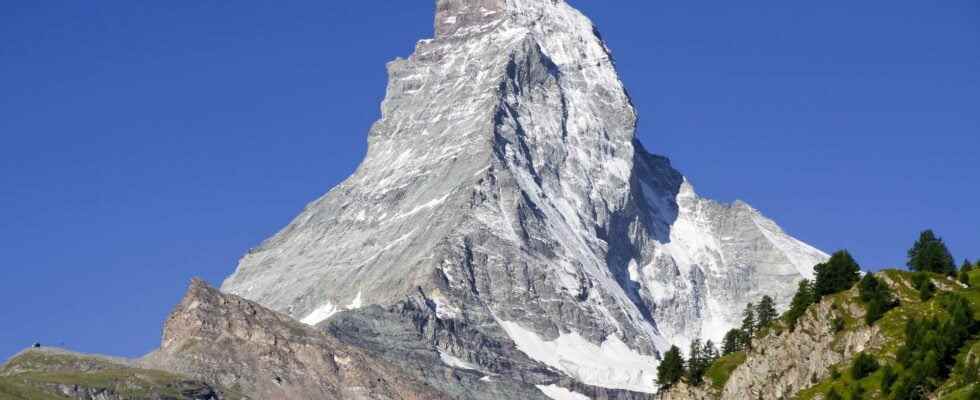Mountains are not as still as one might think. The summit of the Matterhorn in Switzerland oscillates imperceptibly in response to ambient seismic noise from Earth, a new study shows.
You will also be interested
[EN VIDÉO] Seismology, the stethoscope that listens to the heart of the Earth “The Earth is opaque but it is transparent to seismic waves” explains Jean-Paul Montagner, researcher at the IPGP (Institut de physique du Globe de Paris), in the preamble to this video. Thanks to it, we dive into the bowels of the Earth, to observe its structure and understand the origin of earthquakes.
On a human scale, mountains seem immutable. The Alps in particular were already contemplated by our prehistoric ancestors as they appear to us today. Symbol of stillness and resistance in the face of time, the mountains are nevertheless animated by a slow movement of oscillation.
A new study has just shown that they vibrate gently to the rhythm of the seismic background noise that shakes the Earth continuously. This seismic noise, of very low intensity, is generated by the multitude of earthquake which occur almost everywhere on the planet, but also by the waves impacting the seabed.
A mountain that sings
Researchers have taken a particular interest in the Matterhorn, one of the most famous alpine mountains in Switzerland. In particular, they showed that its summit, which culminates at 4,500 meters above sea level, oscillates approximately every two seconds. By monitoring the mountain for a year, the scientists managed to record this vibration in the form of a sound, of very low frequency (to listen to here).
” It’s as if the mountain were singing », enthuses Jeffrey Moore, geologist from the University of Utah and co-author of the article published in Earth and Planetary Science Letters. In the same way that bridges and buildings can come into resonance under the effect of seismic waves generated by earthquakes, masses mountainous meet at the Earth’s seismic noise frequency by amplifying it. In a certain sense, the mountains hum the deep song of our Planet.
To save this resonance oscillation, the researchers placed a seismometer at the top of the Matterhorn, a second on its side and a third at its base. The instruments thus continuously recorded the movements shaking the mountain. The results were interpreted in terms of frequency and direction of oscillation. Firstly, it appears that these movements are relatively regular over time and do not show variations depending on the seasons. The oscillation is therefore not linked to a surface process (linked for example to temperature variations) but to a phenomenon of deeper origin.
When the energy of the ocean shakes the mountains
If the movements are negligible, of course, of the order of nanometer under the effect of seismic noise and millimeter in the event of an earthquake, they are nevertheless very real and occur continuously. The results show that the summit of the Matterhorn oscillates in the north-south and east-west directions at a frequency of 0.42 hertz (less than one oscillation every two seconds). The movement of the summit is also 14 times greater than at the base of the mountain, which remains relatively fixed. Similar results were observed on another Swiss summit with a similar pyramidal shape but of less imposing size, Grand Mythen.
The study shows in particular that the resonance frequency of the Matterhorn is relatively close to the frequency of micro-earthquakes produced by swells and waves. It would therefore seem that theenergy of the ocean has the power to excite the mountains.
One of apps practices of this study is to understand how earthquakes affect steep-sided mountains where the risk of landslides andavalanches is particularly high.
Interested in what you just read?
